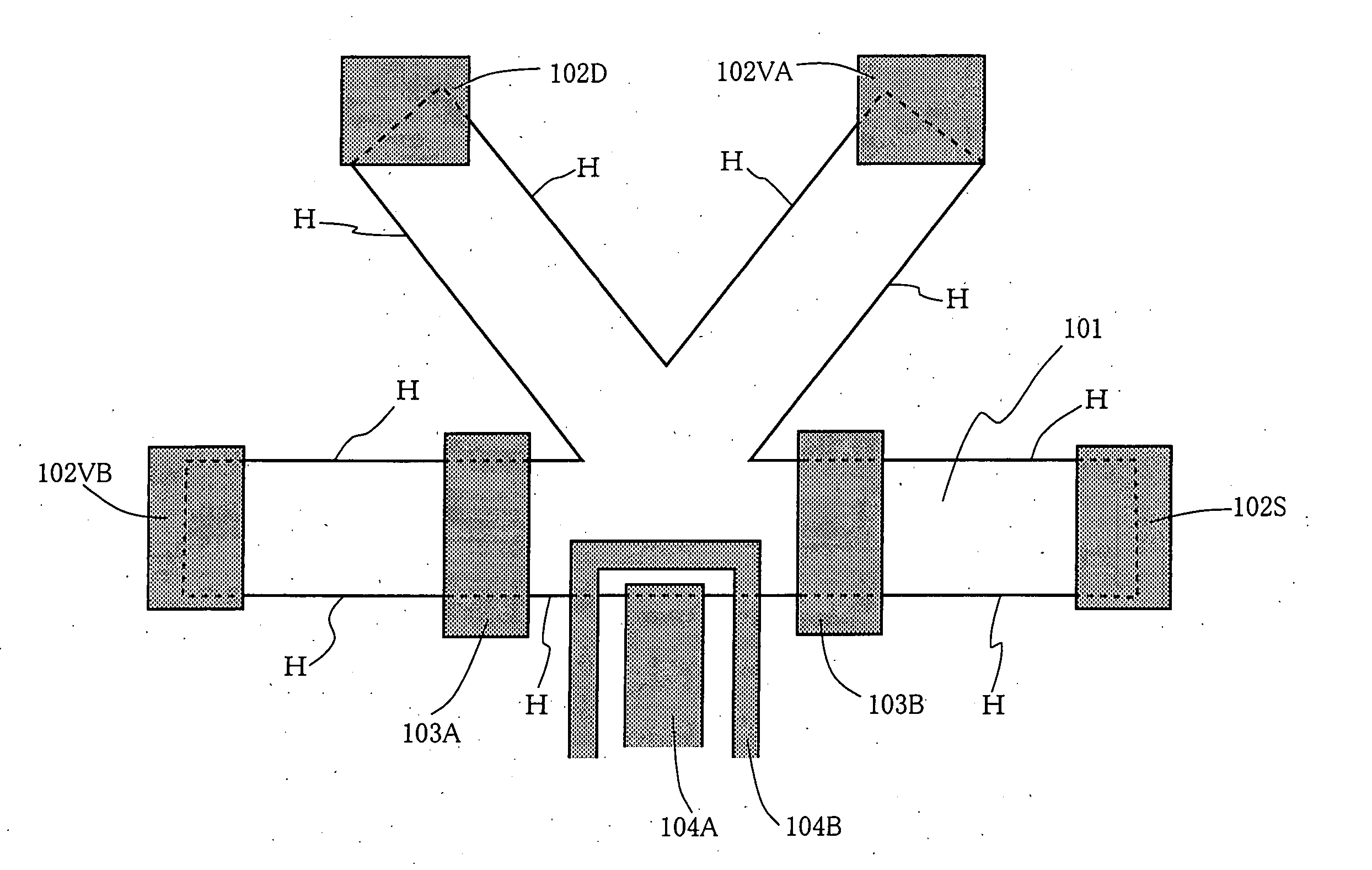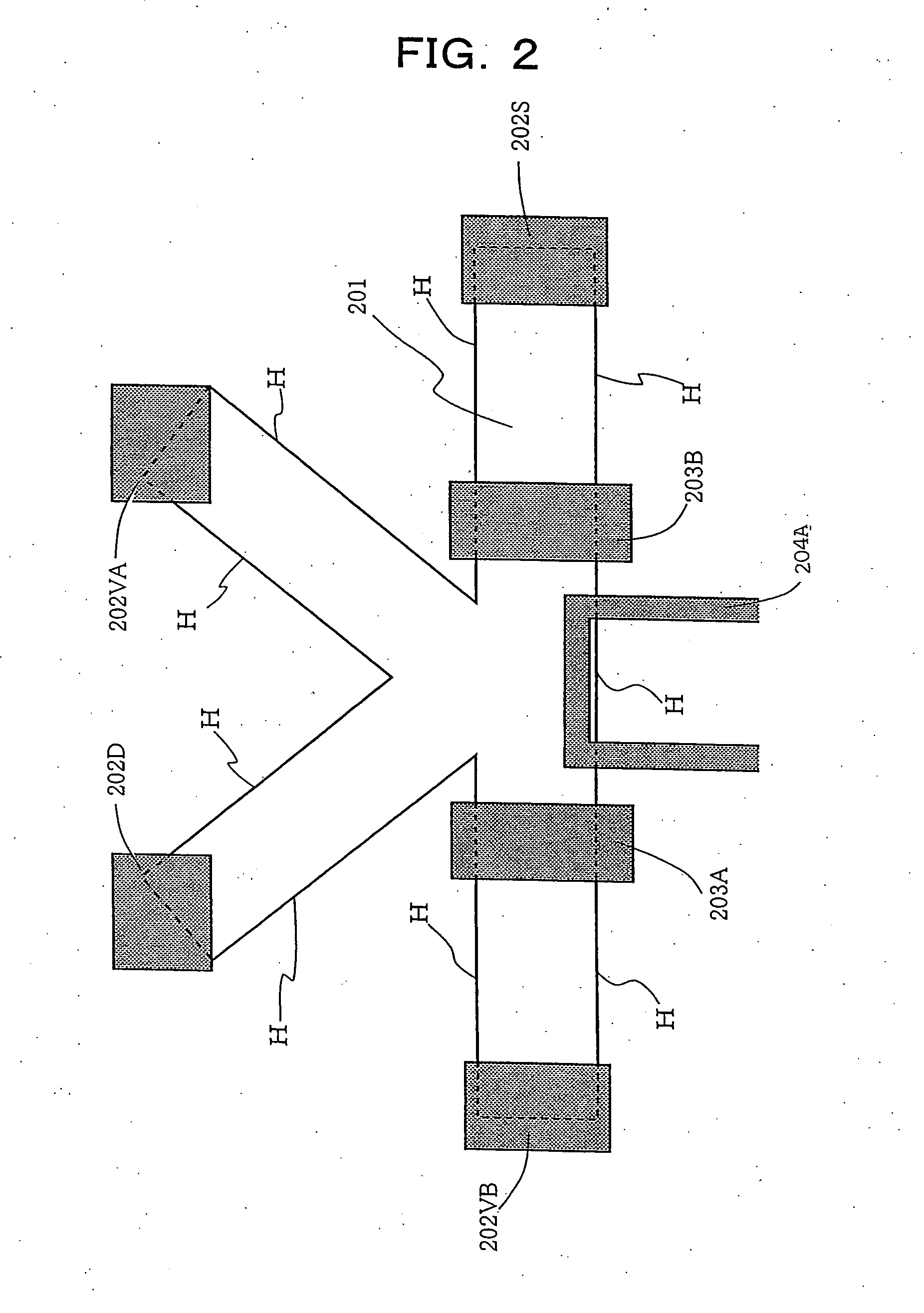In-solid nuclear spin quantum calculation device
a quantum computation and solid-state technology, applied in the field of quantum processor devices, can solve problems such as the difficulty of spin control, the inability to solve the existing semiconductor technology, and the inability to control the nuclear spin at high speed
- Summary
- Abstract
- Description
- Claims
- Application Information
AI Technical Summary
Benefits of technology
Problems solved by technology
Method used
Image
Examples
Embodiment Construction
Hereinafter, the present invention will be described in detail with reference to certain suitable forms of implementation thereof illustrated in the drawing figures.
FIG. 1 is a plan view illustrating the makeup of a typical embodiment of the in-solid nuclear spin quantum processor device of the present invention.
In the Figure there are shown a two dimensional electronic system 101 using solid material, ohmic electrodes 102S, 102D, 102VA and 102VB made of metal, Schottky gate electrodes 103A and 103B made of metal, a waveguide comprising a core wire 104 made of metal and a ground wire 104B made of metal, which are coplanar.
The makeup of another embodiment of the present invention is shown in FIG. 2. In the Figure there are shown a two dimensional electronic system 201 using solid material, ohmic electrodes 202S, 202D, 202VA and 202VB made of metal, Schottky gate electrodes 203A and 203B made of metal, and a microstrip waveguide 204A made of metal.
The two dimensional electroni...
PUM
 Login to View More
Login to View More Abstract
Description
Claims
Application Information
 Login to View More
Login to View More - R&D
- Intellectual Property
- Life Sciences
- Materials
- Tech Scout
- Unparalleled Data Quality
- Higher Quality Content
- 60% Fewer Hallucinations
Browse by: Latest US Patents, China's latest patents, Technical Efficacy Thesaurus, Application Domain, Technology Topic, Popular Technical Reports.
© 2025 PatSnap. All rights reserved.Legal|Privacy policy|Modern Slavery Act Transparency Statement|Sitemap|About US| Contact US: help@patsnap.com



